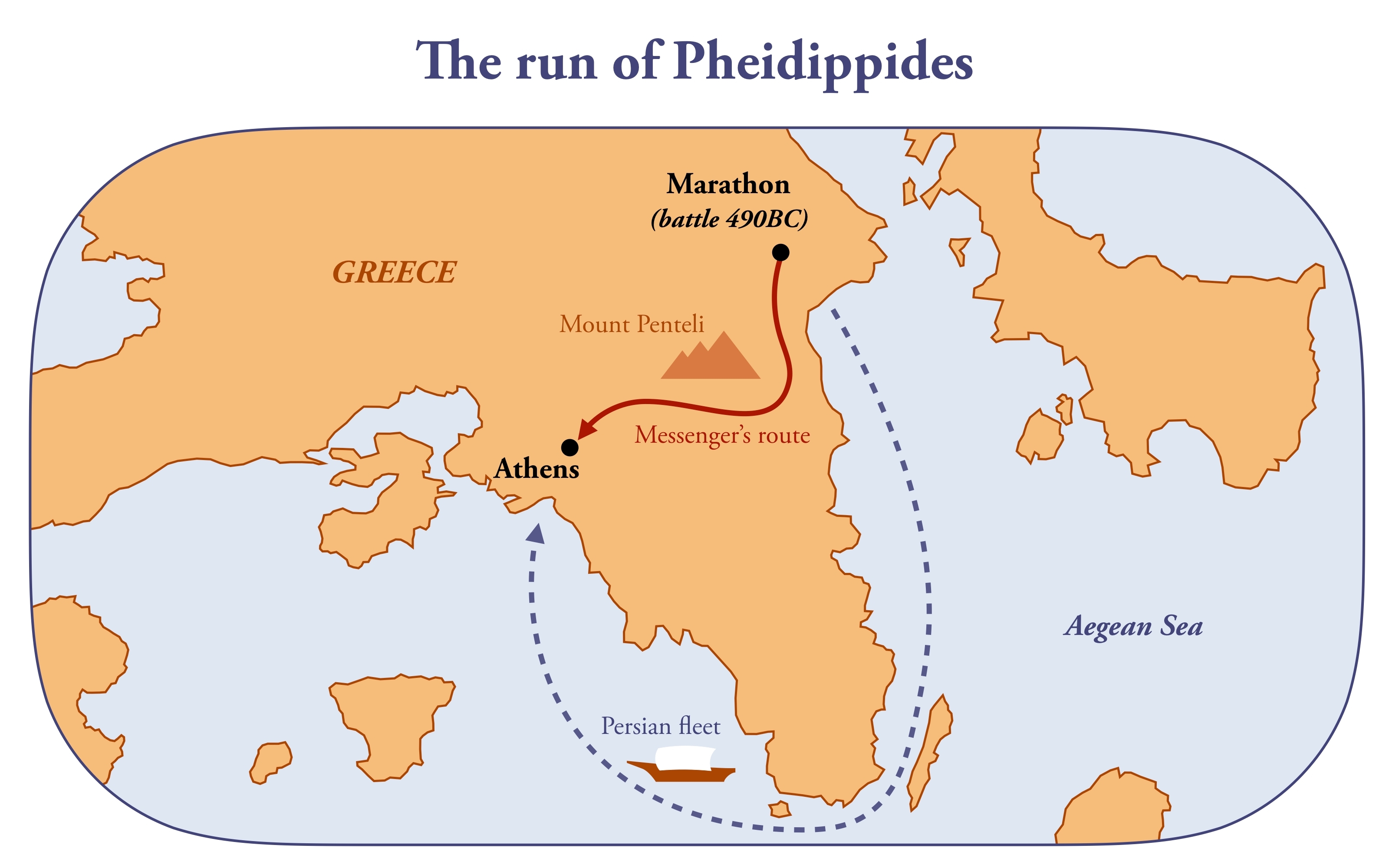A marathon is 42.195 kilometers (26 miles 385 yards), an oddly precise number that doesn’t appear to line up with any modern measurement. To understand how and why it became this specific distance, you must take a short jog through the history of ancient Greece, the first modern Olympics, and the British Royal Family.
The name Marathon stems from a Greek legend involving a soldier named Pheidippides who ran from the Greek town of Marathon to Athens to deliver news about the battle of Marathon during the first Persian invasion of Greece in 490 BCE. So the tale goes, Pheidippides sprinted the 42-kilometer (26-mile) long journey around Mount Penteli, announced the Greek victory, then collapsed and died.
In 1896, the first modern Olympics was held in Athens and organizers were keen to link the event back to the glorious history of ancient Greece. Evoking the story of Pheidippides, they set up a running race that spanned 40 kilometers (24.85 miles).

A map showing the route run by Pheidippides.
Image credit: Dimitrios Karamitros/Shutterstock.com
The first marathon took place on April 10, 1896, and was won by a Greek water carrier called Spyridon Louis who completed the race in 2 hours 58 minutes, and 50 seconds.
The length of a marathon was not formally prescribed at the time, so there was some variation over the next two decades. The 1900 Olympic marathon in Paris ran for 40.2 kilometers (25 miles), while the 1904 Olympic marathon in St. Louis was 39.9 kilometers (24.85 miles).
Things changed in 1908 when the Olympic games came to London. It’s commonly said that King Edward VII and Queen Alexandra, as well as the Prince and Princess of Wales, wanted to ensure the royal children were able to see the start of the race from the nursery window of Windsor Castle. To achieve this, an extra mile and a bit was added.
“The marathon distance increased from 40 kilometers (24.85 miles) to 42 kilometers (26.2 miles) so the royal family could watch both the start of the race at Windsor Castle and the finish from the royal box inside White City Stadium. That accounted for the extra added-on distance,” Paul Clerici, a journalist and historian who’s written extensively about the Boston Marathon, told the Boston University News Service.
A few historians doubt this tale, however. David Davis, author of a book about the 1908 Olympic marathon called Showdown at Shepherd’s Bush, told the New York Times in 2012: “There was no demand by the royal family to start beneath the window.”
Nevertheless, it is clear the 1908 Olympics did set a precedent. In 1921, the International Amateur Athletic Federation officially set the modern 42.195 kilometers (26.219 mi) standard distance for the marathon, apparently citing the 1908 London Marathon.
All “explainer” articles are confirmed by fact checkers to be correct at time of publishing. Text, images, and links may be edited, removed, or added to at a later date to keep information current.
Source Link: Why Is A Marathon 26.2 Miles? Some Blame The British Royal Family